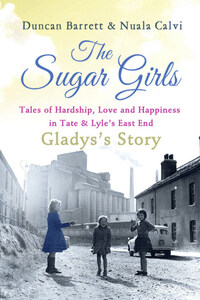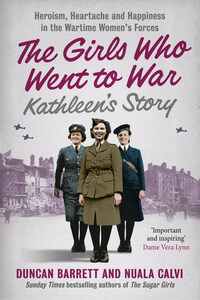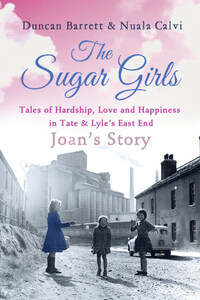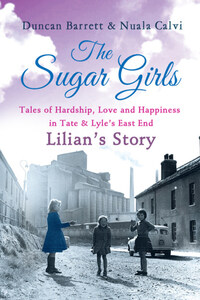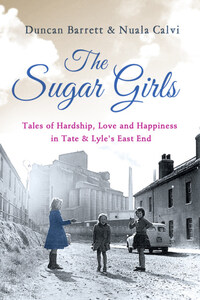Heading east out of the City of London, just past Poplar and the Isle of Dogs, you’ll find the artificial peninsula of Silvertown: a narrow strip of land two and a half miles long, sandwiched between the Royal Docks and the broad sweep of the Thames.
By the mid-twentieth century this area was home to a score of factories, from British Oil & Cake Mills at one end to Henley’s Cable Works at the other. The factories were a major employer, both for people living in the rows of slum houses in Silvertown and those in the surrounding areas north of the docks: Canning Town, Custom House and Plaistow. While the thriving docks provided work for the men in the local community, the factories offered employment for women as well.
When working-class girls left school there were a limited number of options available to them: dressmaking, service, clerical work perhaps, and, for the vast majority, a job in a factory. With the near full employment that followed the Second World War, most young people could simply take themselves along to a factory of their choice, ask for work and be hired on the spot. If they found they didn’t like it there, they could walk out at lunchtime and be taken on somewhere else before tea.
Among the most sought-after factories to work at were the two operated by Tate & Lyle, the Plaistow Wharf and Thames refineries, at either end of the Sugar Mile (so called because, in addition to the sugar and syrup they produced, Keiller’s jam factory was also located there). Tate & Lyle offered the best wages, generous bonuses three times a year, and a social life that was unrivalled in the neighbourhood thanks to the Tate Institute, a subsidised bar and entertainment hall. Unsurprisingly, the company inspired fierce loyalty among its employees – many young men and women working there in the post-war years were the fourth generation of their families to do so.
There were plenty of positions for young ‘sugar girls’, thanks to the many female-dominated departments: the great sugar-packing operation known as the Hesser Floor, the Blue Room where the sheets of paper were printed for the sugar bags, and the can-making and syrup-filling floors where the tins of Lyle’s Golden Syrup were put together and filled. The jobs could be heavy, exhausting and repetitive, but for the women who undertook them the rewards outweighed the hardships. Most stayed until they married or fell pregnant (the rules varied between departments as to when they were forced to leave). Nearly all of them looked back on their time at the factories as a kind of golden era in their lives – of independence, friendship and romance, before the responsibilities of marriage and motherhood took over.
Originally the two refineries had been run by rival companies. Henry Tate, a Liverpool grocer turned sugar magnate, put up his London factory in 1878, when much of Silvertown was still marshland. His great business adversary was Abram Lyle, who opened his own sugar and syrup factory a mile upstream five years later. Lyle was a pious Scot whose ruddy cheeks belied his commitment to teetotalism: he once declared he would rather see a son of his carried home dead than drunk.
For many decades the two firms competed in sugar production, but with an important unspoken agreement: the Lyles would not encroach on Tate’s trademark cubed sugar, while the Tates would not produce a single drop of the golden syrup the Lyles had invented. But a cold war developed between them, and when the Lyles heard rumours that the Tates were about to launch a syrup onto the market, they hastily knocked together a cube plant in response. Leaking word of its existence was enough to ensure that it never had to be used.
The families were scrupulous in keeping up professional boundaries – although the senior Tates and Lyles took the same train from Fenchurch Street Station every morning, they made sure to sit in separate carriages, and never acknowledged each other.
By the end of the First World War it was clear that the competition was actually hurting both companies, but neither had a clear upper hand: the Lyles had the edge in profitability, but the Tates’ output was not to be rivalled. A merger was the obvious way forward. Negotiations began, and for three years Ernest Tate and Charles Lyle tore their hair out in frustration as proposal after proposal was rejected by their respective boards. A deal was finally agreed in 1921.
The new Tate & Lyle company retained both London factories – Tate’s Thames Refinery in the heart of Silvertown and Lyle’s Plaistow Wharf Refinery a mile upriver. The management of the two factories, however, remained in the hands of the respective families. The original Tate and Lyle, Henry and Abram, were both long dead by now, and had never known the fate of their companies. In fact, they had never even met.
